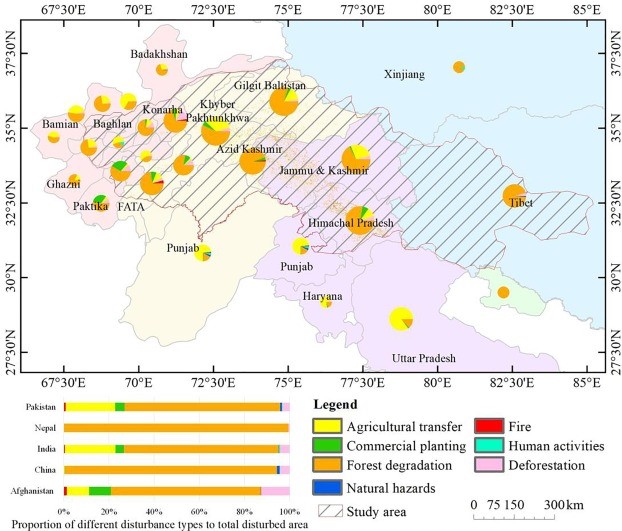
New progress in monitoring drivers of forest cover change in the upper Indus Valley
Publisher: CPJRC
time: 2022-10-19
Prof. Wang Juanle's team, from fourth area of the China-Pakistan earth science research center, made new progress in monitoring the drivers of forest cover change in the upper Indus Valley. The related results were recently published online in Ecological Indicators.
The upper Indus Valley in high Asia is one of the most important water towers in the world. The ecosystem security of this region is directly related to the well-being of 230 million people. The Karakoram, Hindu Kush, Ladakh and Himalayan mountain ranges have created the diverse forest ecosystems of the upper Indus Valley, forming one of the world's important carbon sinks and water-holding areas. The role of upper Indus Valley forests has often been overlooked in the past, with deforestation leading to a reduction in ecosystem services and indirectly affecting water use and food security for the population in the basin. Quantifying the drivers of forest change is fundamental to ensuring sustainable development in the Indus Basin.
Professor Wang's team used forest change data, historical fire data, topographic data and land use data to construct a decision tree model for forest change driver identification, and achieved the classification of eight forest change drivers in the upper Indus Valley. The results showed that (1) disturbance mainly occurred in the central region of the upper Indus Valley, where forest degradation was the main driver accounting for 69.0%, and agricultural transfer was the secondary driver accounting for 21.6%; commercial cultivation and deforestation drivers both disturbed about 4% of the area, and fire, human activities, and natural hazards disturbed only a small area of forest accounting for less than 1%; (2) the spatial distribution of recovery was basical-ly consistent with the disturbance, with natural recovery being the main driver of forest recovery, accounting for 60.1%, and artificial recovery being the secondary driver, accounting for 39.9%; (3) relevant governance measures or forest conversation policies in the Indus Valley were recommended, such as increasing the supply of non-biomass energy, controlling the scale of livestock, and establishing friendly land use policies, to maintain the growth and balance of forest area and quality.
The study provides an important data base and monitoring method for planning forest resource utilization, protecting fragile environment, promoting regional sustainable development, and ensuring ecological security of the China-Pakistan Economic Corridor in the relevant countries of the Indus Basin.
This research was funded by the China-Pakistan Earth Sciences Research Center.
Title:Mining the drivers of forest cover change in the upper Indus Valley, high Asia region from 1990 to 2020
Link:https://www.sciencedirect.com/science/article/pii/S1470160X22010391

Paper related information

Spatial and temporal distribution of drivers of forest disturbance in the upper Indus Valley